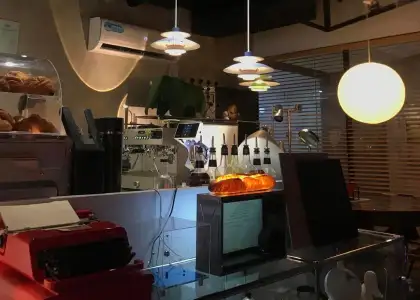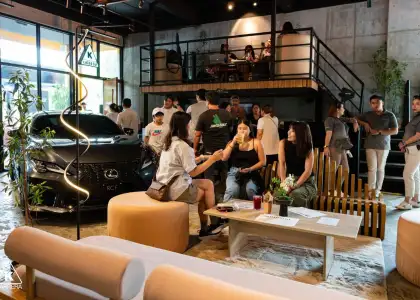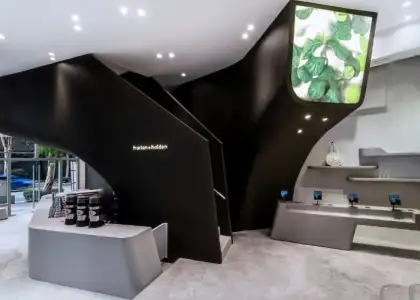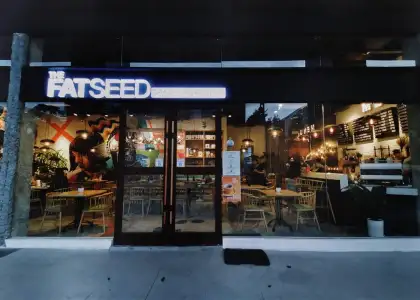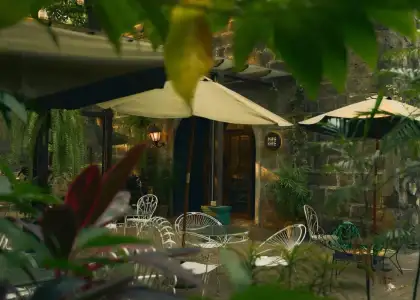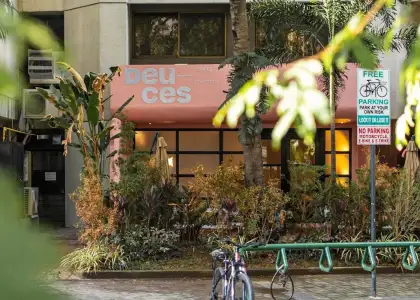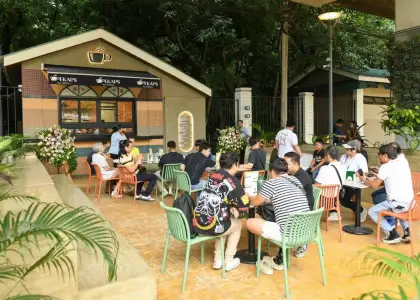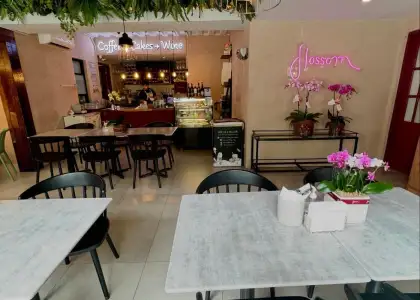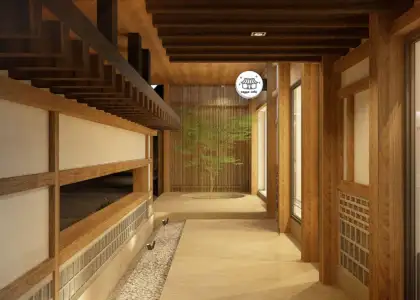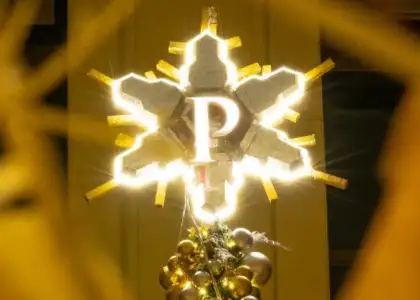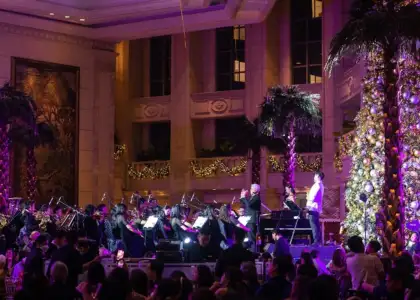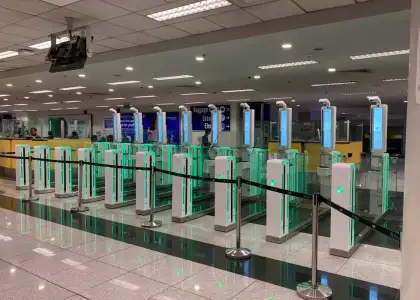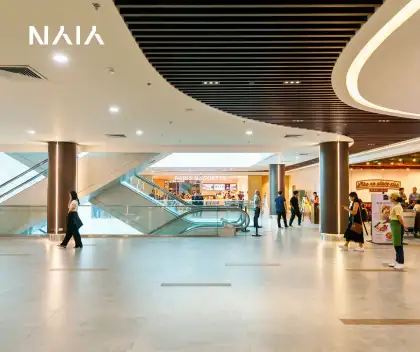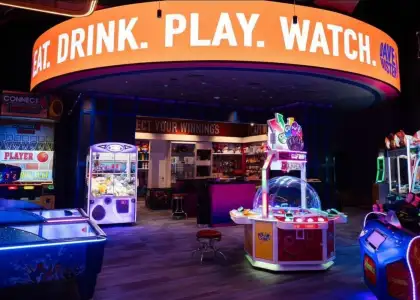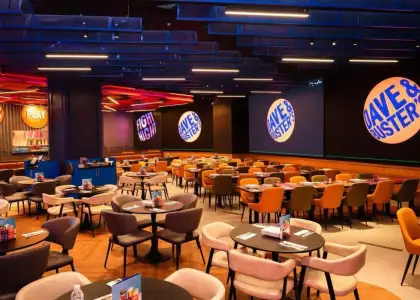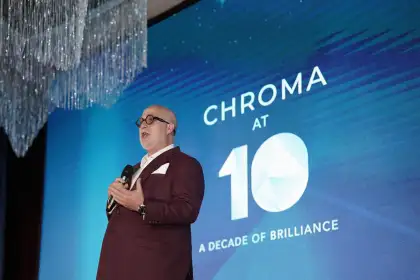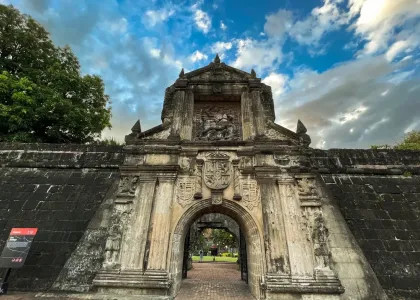Intramuros After Dark: A Culture, History, and Heritage Night Tour of Old Manila’s Walled City

The night tour had already begun when it dawned on Kuya Butch that he had brought salt for protection.
It was sundown one Sunday in early October. We paused outside the ruins of the American Barracks in Fort Santiago, the participants of the Intramuros After Dark tour surrounding Kuya Butch as he rummaged inside his bag for little pouches of salt. Protection, apparently, for dark entities and evil spirits.



Much, or perhaps too little, has been said about Intramuros, the 64-hectare "Walled City" of Manila and Fort Santiago, famously known as the location where national hero Dr. Jose Rizal was imprisoned in 1896 before his execution. It probably depends on your context: did you find learning Philippine history in school boring or exciting? Did your history teachers teach for passion or out of routine? Were these tackled in the classroom at all?
Butch Pedalino, the guide of Intramuros After Dark, refuses to be called a historian. He is simply Kuya Butch, a storyteller whose love for history began in elementary school. As early as then, he told The Beat Asia, he would volunteer at the school library so he can oversee the book checkouts and surround himself with all the books he desired to read.
For any bookworm and lover of history, this is exactly heaven. But for the rest, it's work that can easily be passed off as boring.
Kuya Butch, now a father in his middle age, began his night walking tours in 2017 upon retirement. A good friend of the late artist and guide Carlos Celdran, who held his own walking tours in Intramuros, Kuya Butch shared that the initiative was initially a supplemental module on Philippine history for homeschooled kids. It eventually grew its own arms and legs into a sought-out night walking tour open to people of all sorts: professionals, students, tourists, heritage and culture aficionados, and even those who feel lukewarm about history but want to learn, nonetheless.
The tour that day was supposed to begin in reverse, starting by the fountain in Plaza Roma just across the Manila Cathedral at 5 PM. Thirty minutes before the tour started, however, rain came, and the participants were instructed to head to the Intramuros Visitation Center's (IVC) Teatro inside Fort Santiago.

Fort Santiago



The military installation that is Fort Santiago is 451 years old. Known as "one of the oldest fortifications" in the capital, the fort was constructed during the Spanish colonization in 1571 and was used as headquarters and prison of the nations that invaded and colonized the Philippines: Spain, Britain, Japan, and the United States. Its walls and sites have borne witness to the centuries-long history of a nation whose inhabitants' resistance against their captors and struggle for freedom were marred with blood, destruction, and torture.
"If only these walls could talk," Kuya Butch mused.
Standing outside the American Barracks, its walls riddled with bullet holes, Kuya Butch explained to this small group that the former Philippine President Elpidio Quirino was imprisoned here during the Japanese occupation in 1943. His narration of historical facts is interspersed with the occasional ghostly anecdote, but not in a way that trivializes the horrors that transpired in the area.


We pass the moat, a man-made canal with a bridge, towards Fort Santiago's main gate leading to the inner sanctum. The iconic and ornate gate features elaborate carvings of the arms of Castile and Leon, and a wooden relief of Santiago Matamoros (Saint James), the patron saint of Spain and from whom the citadel is named after.


You'll first see Plaza de Armas and the Rajah Soliman Theater in the inner sanctum. It was initially the Infantry Quarters of Fort Santiago before it was devastated during the Battle of Manila in 1945 in the Second World War. At night, the theater is almost pitch black, save for the light from the phones of visitors that illuminated it. From above, a full moon shone brightly.
Although renovated by National Artist for Architecture Leandro Locsin in 1967, the Rajah Soliman Theater still bears remnants of its past, with bullet holes marking its walls like craters. For the unknowing, the Philippine Educational Theater Association (PETA) was born here and had used the space as its stage for its plays before transferring to Quezon City in the mid-2000s.




One of the sobering things you will stumble upon in the sanctum is the White Cross. Situated on a slightly raised stone platform, the White Cross is a monument for approximately 600 remains of unknown Filipinos who perished during the Battle of Manila.
"Their bodies were found inside a nearby dungeon where victims of the atrocities perpetrated by the Japanese Imperial Forces were imprisoned during the last days of February 1945," its marker read.
It is said that the prisoners' corpses were cramped when discovered and that they had died from suffocation and heat exhaustion. Their remains are buried under the White Cross.

The cross leads to the entrance to the dungeons below. Originally used for storing gun powder, the dungeons were eventually turned into prison cells. Mind your head as you enter the slanted, low-ceilinged entrance to get inside the dungeons, which can be humid and claustrophobic.
It was an experience that Kuya Butch appropriately described as, "Masyadong mabigat (it's too heavy emotionally)." We couldn't bear to linger inside.






Beyond Fort Santiago
About two hours were spent inside Fort Santiago alone. By 7 PM, we ventured outside the citadel, past a dirty ice cream cart, pedicabs, and tricycles, following the crosswalks to stop in front of the Manila Cathedral.
Renowned as "the mother of all churches," the Manila Cathedral was also ravaged by the war. It stands as one of the most iconic churches in the country, its facade characterized for its three access ways and bronze carvings that pay homage to Mary, as well as statues of famous saints like St. Rose of Lima, St. Jacob the Great, St. Andrew the Apostle, St. Francis Xavier, St. Polycarp, and St. Anthony Abbot. It used to have a separate bell tower before it was destroyed by an earthquake in 1880 and remained towerless until 1959.
Kuya Butch shared there are some that say the cathedral is cursed due to the partition in its main access way, believed to be a bad sign for couples who get married there (sorry ShaGab fans). He cheekily offered that if you want "forever," one should get married at the San Agustin Church instead, which is just a stone's throne away and has a longer path for the bride to walk on — a good sign, apparently.


We lumber towards the Memorare - Manila 1945 monument. While the White Cross within Fort Santiago memorializes the 600 remains found in its dungeons, the Memorare was erected in memory of over 100,000 civilians who were killed during the Battle of Manila. Most of these civilians were victims of heinous acts at the hands of the Japanese forces and were casualties of the artillery barrage from the American forces. Manila, during World War II, was one of the most ravaged capitals in the world, along Berlin in Germany and Warsaw in Poland.
The Memorare also lists some sites where other massacres perpetrated by the Japanese forces were committed, such as La Concordia College, De La Salle College, and St. Paul's College, among many others.


We arrive at the Plaza San Luis Complex, which houses the newly opened Café Intramuros. Outside the café, by the sidewalk, is a Piedra China or granite from China, that Kuya Butch said he discovered by accident while taking cover one rainy night a few months back.
"I already heard about it a long time ago and know that they're abundant inside the Walled City," he said. "I was intrigued by the Chinese markings and so took a pic and sent it to some Chinese friends in Binondo from the same advocacy [and] passion and they were the ones to confirm it to be a tombstone and a Piedra China."


Just across the plaza is the 16th century San Agustin Church. It is one among four Roman Catholic churches classified as a World Heritage Site by UNESCO due to its European Baroque architecture that was constructed by Filipino and Chinese craftsmen using local materials.
The church, along with Paoay Church in Ilocos Norte, the Nuestra Señora de la Asuncion in Santa Maria in Ilocos Sur, and the Santo Thomas de Villanueva Church in Iloilo, was regarded for their iconic "retablos or altars of high Baroque style, volutes of contrafuertes (buttresses), pyramidal finials of wall facades, [and] wall buttresses separating criptocollateral chapels..."


Manila
Feet aching, we venture beyond the walls of Intramuros with Kuya Butch, past the renovated Lagusnilad Underpass, and find ourselves thrown back into mad Manila, with its rumbling jeepneys, hurtling cars that honk too aggressively, the indigents sleeping on the sidewalks, the smell of refuse and urine wafting in the air.
At the Andres Bonifacio Shrine in Ermita, we take a seat to watch the musical dancing fountain, a project by former Manila Mayor Isko Moreno that comes alive every hour beginning at 6 PM. It is a P40-million spectacle that was reportedly paid for by business tycoon Manny V. Pangilinan, the pomp of which serves as eye candy for every bystander and vehicle that passes it. It even plays, surprise, Hotdog’s “Manila.”
It almost felt like a distraction.


Walk beyond this fountain and you’ll find yourself in Liwasang Bonifacio, or Plaza Lawton, which is right across from the Manila Central Post Office. Sparsely lit and with a depressing air, the city square is occupied by people living in homelessness, who laid directly on the cold pavement or folded cardboard to pass the night. Passing through the plaza silently, it almost felt like we were trespassing the space of its inhabitants.

We reach the last stop of the four-hour tour, Jones Bridge, which traverses the Pasig River and connects Intramuros to Binondo. Seeing the bridge appear in grisly news headlines is not exactly a novel thing; a Google search of the bridge would bring up reports of a bloody buy bust operation in its underpass. In 2001, the floating body of a hazing victim, Reserve Officers' Training Corps cadet Mark Chua, was retrieved from the waters near the bridge.
Jones Bridge was renovated for P20 million and was inaugurated in November 2019. It’s now lined with elaborate lampposts to illuminate its walkways. From this point, we stare at Binondo Chinatown's vibrantly lit Filipino-Chinese Friendship Arch, which changed colors every now and then. The arch, inaugurated in 2015, was erected to boost the tourism and economy of the district.


Kuya Butch told The Beat Asia that he wanted to show not just the attractions of Intramuros but also "the sad plight and reality that Manila had been facing since."
"A nation and its people cannot go forth by being ignorant to what and how it started as a nation, as a people. It is an innate desire to know, '[W]here did I come from?" and '[W]hat is my story?’" he said. "If they are willing to go beyond the visuals, and focus on the stories within these walls, they will learn."
The joy he derives from his night walking tours is simple too, and yet specific. "When at least someone from the group says, 'Ahh, kaya pala!'" For someone who refuses to be called a historian, it was spoken like a true historian.
We ended the tour on Jones Bridge, but not without parting instructions from our guide. Kuya Butch told us to shake off or "pagpag" elsewhere before heading home, a known Filipino superstition wherein one takes a detour to dust off any evil spirits that may follow them home. He likewise instructed us to rub our hands with the protective salt, then throw some over both of our shoulders, before heading inside the house.
This author, a skeptic, did all the above anyway.
Note: This Halloween, Intramuros After Dark will be holding a tour later than usual. If you dare to traverse on foot the Manila Film Center, The Coconut Palace, Paco Park Cemetery, the Philippine General Hospital, and the Syquia Mansion, among other sites, on Oct. 31 from 9 PM to midnight, feel free to message its Facebook page.
Our tour's route:
Fort Santiago Theater; Fort Santiago Tunnel; Ruins of the American Barracks; Moat; Fort Santiago Gate; Plaza de Armas; Rajah Soliman Theater; White Cross; Dungeons; Falsabraga Media Naranja; Chapel Cell of Rizal; Manila Cathedral; Memorare - Manila; Plaza San Luis Complex; Cafe Intramuros; San Agustin Church; Lagusnilad Underpass; Andres Bonifacio Shrine; Manila Dancing Fountain; Liwasang Bonifacio/Plaza Lawton; Manila Central Post Office; Jones Bridge; and Filipino-Chinese Friendship Arch.
Subscribe to The Beat's newsletter to receive compelling, curated content straight to your inbox! You can also create an account with us for free to start bookmarking articles for later reading.




















